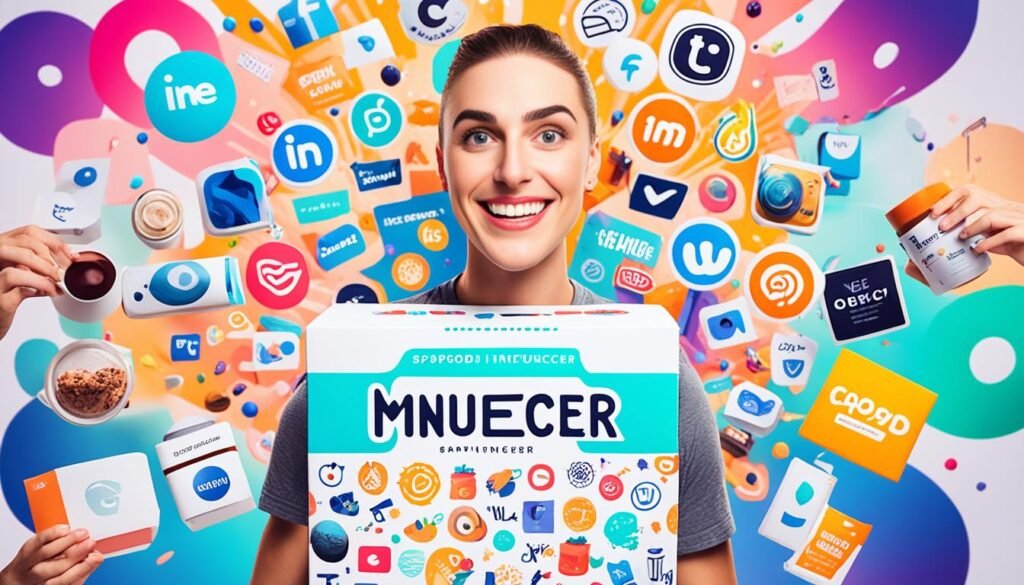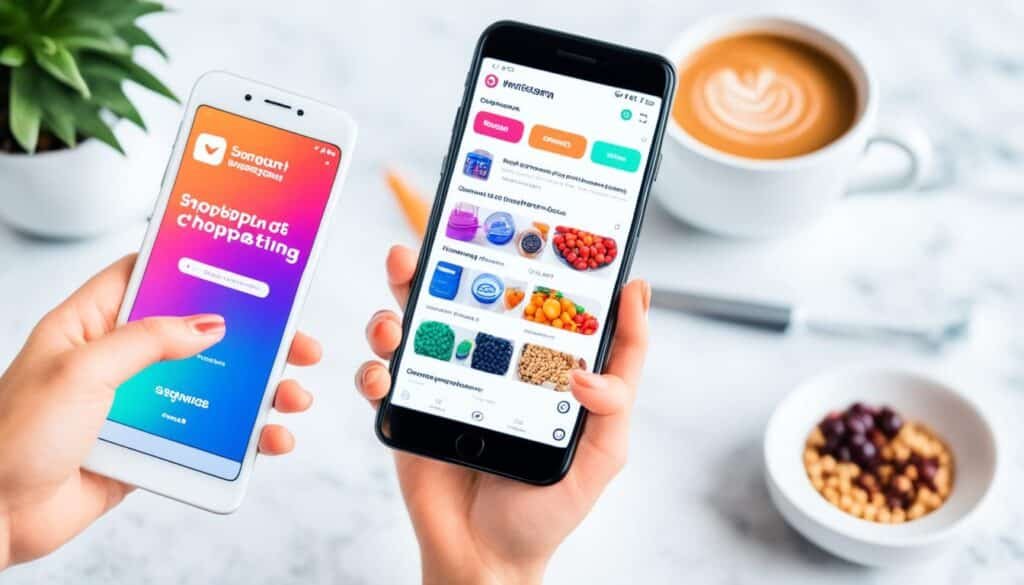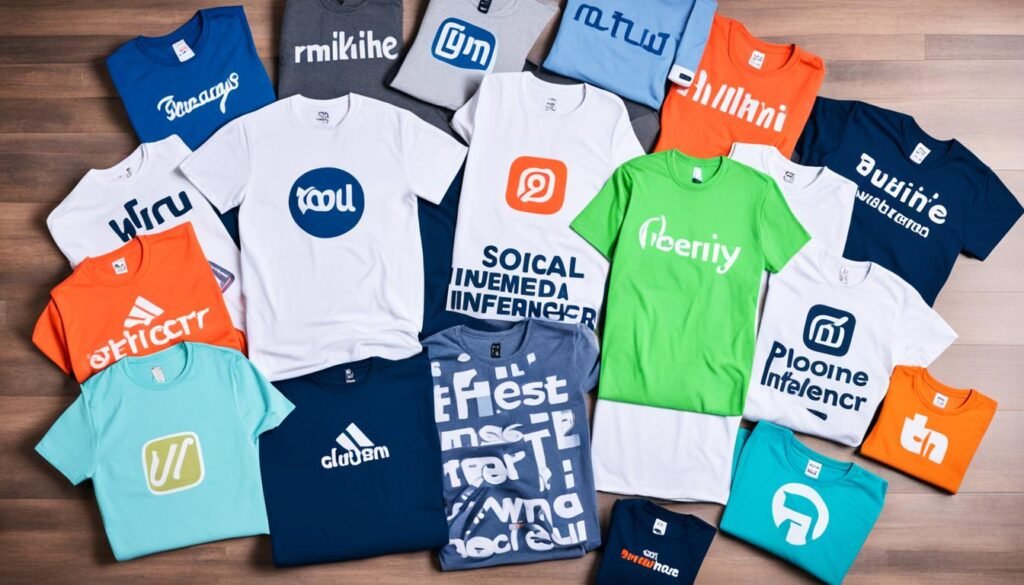Social media influencers have become a powerful force in the digital landscape. These creators attract millions of followers and have the ability to influence consumer behavior. But how do they actually make money?
There are several ways in which influencers monetize their online presence. One common method is through sponsored posts, where brands pay influencers to promote their products or services. This can be done on various platforms, including Instagram, which is one of the most popular channels for influencer marketing. As an Instagram influencer, creators can partner with brands to create engaging content that reaches a wide audience.
Affiliate marketing is another lucrative avenue for influencers. By promoting products or services through affiliate links, influencers can earn a commission for each sale made through their unique links. This allows them to earn passive income while recommending products they genuinely believe in.
In addition to sponsored posts and affiliate marketing, influencers also generate income through brand partnerships. These partnerships involve long-term collaborations with brands, where influencers act as brand ambassadors. They may create content, attend events, or even develop their own product lines under the brand’s umbrella.
It’s important to note that not all influencers achieve the same level of financial success. The income potential varies greatly based on factors such as follower count, engagement rate, and niche market. However, for those who have established a strong online presence, the earning potential can be significant.
Whether it’s on Instagram, TikTok, or any other platform, social media influencers have found innovative ways to monetize their online presence. They have tapped into the vast opportunities provided by the Creator Economy, which is valued at $250 billion and continues to grow at a rapid pace.
Key Takeaways:
- Influencers make money through sponsored posts, affiliate marketing, and brand partnerships.
- The Creator Economy is a lucrative industry valued at $250 billion.
- Income potential varies among influencers based on factors like follower count and engagement rate.
- Instagram is a popular platform for influencer marketing, with different earnings based on follower count.
- Affiliate marketing and selling products are additional ways influencers generate income.
The Creator Economy: A Lucrative Industry for Influencers
The Creator Economy is a rapidly growing industry valued at $250 billion. This flourishing sector offers influencers the opportunity to make a living and carve out a successful career in the digital realm. However, it is important to note that financial success is not guaranteed for every creator. Earnings within the creator economy are largely reliant on online relevance, making it a competitive landscape where income potential varies greatly among influencers.
With the rise of social media platforms and the increasing demand for authentic content, influencers have become valuable assets for brands looking to engage with their target audiences. Creators who can captivate and resonate with their followers are in high demand, often leading to lucrative brand partnerships, sponsorships, and collaborations.
While some creators are able to generate substantial income and make a comfortable living, earning over $50,000 a year, not every influencer achieves the same level of financial success. The amount of money influencers make depends on various factors such as their niche, follower count, engagement rates, and the level of business acumen they possess.
The Importance of Online Relevance
Online relevance is a crucial aspect of the creator economy. To make a living as an influencer, it is essential to establish a strong online presence and maintain relevance in the ever-evolving digital landscape. This involves consistently creating high-quality and engaging content, staying up-to-date with industry trends, and actively participating in conversations and communities within their niche.
Influencers who can maintain their relevance and consistently provide value to their audience are more likely to attract brand partnerships and monetization opportunities. Moreover, cultivating a loyal and engaged following strengthens their position in the creator economy and opens doors to additional revenue streams.
“To make a sustainable income as an influencer, creators must focus on building an authentic and engaged community by consistently delivering high-quality content that resonates with their audience.” – Influencer Marketing Expert
The Income Potential within the Creator Economy
The income potential for creators within the creator economy varies significantly. While some may achieve financial prosperity and make a substantial living, others may struggle to generate substantial revenue. It is not uncommon for influencers to experience fluctuations in income due to factors such as algorithm changes, fluctuations in engagement rates, or shifting trends within their niche.
However, for those influencers who can establish themselves as authorities in their respective fields and build a devoted following, the earning potential can be substantial. Through a combination of brand partnerships, sponsored content, advertising revenue, merchandise sales, and other monetization strategies, creators can leverage their online presence to generate income streams and forge a successful career.
Income Potential Among Influencers
| Type of Influencer | Average Annual Income |
|---|---|
| Nano-Influencers (Under 10,000 followers) | $10,000 – $50,000 |
| Micro-Influencers (10,000 – 100,000 followers) | $50,000 – $100,000 |
| Mid-Tier Influencers (100,000 – 500,000 followers) | $100,000 – $500,000 |
| Mega-Influencers (500,000+ followers) | $500,000+ |
While these figures represent average income ranges, it is important to note that influencer earnings can vary significantly based on factors such as niche, engagement rates, content quality, and overall influence within their respective communities.
Niccoya Thomas: A Lifestyle Creator’s Financial Breakdown
Niccoya Thomas, an Atlanta-based lifestyle creator, entered the digital space as a bet with her cousin and quickly rose to fame with a following of 1 million. Like many influencers, Niccoya employs various monetization strategies to generate income from her online presence. Let’s take a closer look at her income breakdown, brand partnerships, ad revenue, merchandising, and expenses.
Income Breakdown
Niccoya’s income primarily comes from three main sources:
- Brand Partnerships: Niccoya collaborates with brands that align with her lifestyle niche, promoting their products or services through sponsored content.
- Ad Revenue: She monetizes her social media content through ad placements, earning a portion of the revenue generated by the ads displayed to her followers.
- Merchandising: Niccoya leverages her online presence to sell merchandise, offering her followers a range of products that reflect her personal brand.
Expenses
To maintain her online presence and continue creating engaging content, Niccoya incurs the following monthly expenses:
- Management Fees: Niccoya works with a management team that assists her with brand partnerships, negotiations, and overall career guidance.
- Gaming Systems: As a lifestyle creator, Niccoya invests in gaming systems to engage with her audience through live streaming and gaming content.
- Travel: Niccoya’s lifestyle content often involves travel, and she covers expenses related to transportation, accommodations, and food.
- Equipment: To produce high-quality content, Niccoya invests in cameras, lighting equipment, and other tools necessary for her creative process.
By carefully managing her income and expenses, Niccoya maintains a profitable and sustainable career as a lifestyle creator.
“As an influencer, it’s essential to balance my expenses while maximizing my income opportunities. By nurturing brand partnerships, optimizing ad revenue, and leveraging merchandising, I can continue to pursue my passion and serve my audience.”
Understanding the financial breakdown of influencers like Niccoya Thomas provides valuable insights into the influencer economy and how creators navigate the challenges and opportunities in monetizing their digital presence.
Brian Lindo: Food and Travel Creator’s Financial Success

Brian Lindo is a renowned food and travel creator based in New York City. He initially started his Instagram account to share restaurant recommendations with his followers. Over time, his engaging content and unique perspective on culinary experiences have garnered him an impressive following of over 318,000 users.
As a food and travel creator, Brian has successfully monetized his online presence through various income streams. These include brand partnerships, ad revenue, and attending events related to his niche. Let’s take a closer look at how each of these contributes to Brian’s financial success:
Brand Partnerships
Brand partnerships play a significant role in Brian’s monthly income. Companies in the food and travel industry collaborate with him to promote their products, services, or destinations. These partnerships allow Brian to leverage his influence and create content that resonates with his audience while generating revenue.
Ad Revenue
With his substantial follower base, Brian earns ad revenue through sponsored advertisements on his social media platforms. Brands pay to have their ads featured within Brian’s engaging content, exposing their products or services to his dedicated followership. This mutually beneficial arrangement further contributes to Brian’s monthly income.
Event Attendance
As a recognized food and travel creator, Brian is invited to attend events related to his niche. These events provide valuable networking opportunities and avenues for additional income. Depending on the event, Brian may earn through appearances, sponsorships, or exclusive collaborations.
While Brian’s income is derived from various sources, it is essential to consider his monthly expenses. Managing a successful online presence comes with its own set of costs. Brian’s expenses typically include:
Management Fees: As Brian’s popularity grew, he enlisted the services of a professional management team. These fees ensure his online presence is effectively maintained and optimized for growth.
Food Costs: As a food creator, Brian frequently visits restaurants and culinary establishments. While this provides exciting content for his audience, it also incurs expenses covering meals and tastings.
Travel Expenses: Brian’s passion for travel often takes him to various destinations to explore unique cuisines. However, these adventures come with associated costs such as transportation, accommodation, and other travel expenses.
Overall, Brian Lindo’s success as a food and travel creator showcases the lucrative opportunities available in the influencer space. His combination of engaging content, brand partnerships, ad revenue, and event attendance has allowed him to establish a sustainable monthly income. However, it is vital to note that each influencer’s journey is unique, and financial success may vary based on multiple factors, including niche, follower engagement, and personal brand.
Todd Naylor II: Trivia Creator’s Monthly Earnings

Todd Naylor II, a trivia creator from Lansing, Michigan, has captivated his followers on TikTok with thought-provoking questions that keep them entertained and engaged. His unique content has garnered a loyal fan base and opened up opportunities for him to monetize his social media presence.
One of the primary sources of income for Todd Naylor II is through brand partnerships. By collaborating with brands that align with his content and appeal to his audience, he can promote their products or services while earning a monthly income. These brand partnerships not only provide financial support but also help to increase his visibility and reach.
Furthermore, Todd Naylor II takes advantage of creator funds that are available on various social media platforms. These funds are designed to support creators in their endeavors and provide additional monetary compensation for their content. Through these creator funds, he can supplement his monthly income through the engagement and views his videos receive.
In addition to brand partnerships and creator funds, Todd Naylor II also utilizes affiliate links to generate income. By recommending products or services and including affiliate links, he can earn a commission for any purchases made through those links. This form of passive income adds to his monthly earnings and provides an avenue for ongoing revenue.
Managing his expenses is crucial for Todd Naylor II to maintain profitability. His monthly expenses primarily revolve around equipment and software fees. As a trivia creator, having reliable and up-to-date tools is essential to produce high-quality content that appeals to his audience. By investing in the necessary equipment and software, he ensures that he can continue delivering engaging trivia content.
| Monthly Income Sources | Amount |
|---|---|
| Brand Partnerships | $5,000 |
| Creator Funds | $1,000 |
| Affiliate Links | $500 |
Table: Monthly Income Breakdown
By diversifying his income sources, Todd Naylor II ensures stability and sustainability in his monthly earnings. Through brand partnerships, creator funds, and affiliate links, he can craft a successful career in the trivia creator industry while supporting his online presence.
How Much Money Instagram Influencers Make

Instagram influencers have become a significant force in the world of social media marketing. Their ability to engage with millions of followers has attracted the attention of brands looking to leverage their online influence.
According to a report by Influencer Marketing Hub, the earnings of Instagram influencers vary depending on their follower count. The report found that influencers with a smaller following, known as nano-influencers (under 10,000 followers), earn an average of $195 per post. Midtier influencers, who have between 10,000 to 1 million followers, can command an average of $1,221 per post. Meanwhile, macro-influencers, with over 1 million followers, earn an average of $1,804 per post.
The report also highlights that Instagram influencers, on average, earn $2,970 per month or $35,640 annually. These figures demonstrate the earning potential that comes with building a substantial online presence on Instagram.
To provide a visual representation of these earnings, here is a breakdown of the average monthly earnings for each category of Instagram influencers:
| Instagram Influencer Category | Average Monthly Earnings |
|---|---|
| Nano-Influencers (Under 10,000 followers) | $195 per post |
| Midtier Influencers (10,000 to 1 million followers) | $1,221 per post |
| Macro-Influencers (Over 1 million followers) | $1,804 per post |
This data highlights the significant earning potential of Instagram influencers, especially those with larger followings. However, it’s important to note that these figures are averages, and individual influencers may earn more or less depending on various factors, such as engagement rates, niche, and the value they bring to brand partnerships.
Instagram continues to be a platform where influencers can monetize their online presence and build successful careers. As the influencer marketing industry evolves, it’s essential for brands to recognize the value and impact that Instagram influencers can have on their marketing campaigns.
How Influencers Make Money: Sponsored Promotions and More

Social media influencers have several avenues to make money. Aside from their organic content creation, they can take advantage of various strategies to monetize their online presence and establish sustainable revenue streams. Let’s explore some of the most effective methods:
Sponsored Promotions
One of the primary ways influencers generate income is through sponsored promotions. Brands pay influencers to create content that promotes their products or services. This type of collaboration allows influencers to leverage their influence and reach a targeted audience, while brands benefit from a more personal and authentic connection with potential customers.
Managing Social Media Accounts
In addition to sponsored promotions, influencers can also take on the role of managing social media accounts for brands. This involves creating and curating content, interacting with followers, and implementing strategies to drive engagement and growth. By offering their expertise to brands, influencers can earn a steady income while helping businesses establish a strong online presence.
YouTube Channel Ads
For influencers with a strong presence on YouTube, YouTube channel ads can be a significant source of revenue. By allowing ads to play before, during, or after their videos, influencers earn a portion of the ad revenue generated. This method can be highly lucrative, especially for creators with a large and engaged subscriber base.
Affiliate Links
Another popular way for influencers to monetize their content is through affiliate links. Influencers promote products or services by including unique tracking links in their content. When their followers make a purchase using those links, the influencer receives a commission. This method offers influencers the opportunity to earn a passive income based on their audience’s purchasing behavior.
Merchandising
Influencers can also create and sell their own merchandise, allowing them to establish a brand beyond their online presence. Merchandising can include a wide range of products, such as clothing, accessories, or even digital products like e-books or online courses. By leveraging their personal brand and connection with their audience, influencers can generate additional income while providing their followers with unique and exclusive products.
Subscriptions and Tips
Some influencers offer premium content or subscriptions and tips, which fans can access for a recurring fee. This model allows influencers to provide exclusive content, behind-the-scenes access, or personalized interactions with their most dedicated followers. Similarly, influencers may offer the option for followers to provide voluntary tips as a means of supporting their work. These methods can provide a reliable and ongoing source of income for influencers.
Brand Ambassadors
Lastly, influencers can become brand ambassadors by partnering with specific brands to promote their products or services on an ongoing basis. As brand ambassadors, influencers develop a long-term relationship with the brand and often have more involvement in the product development and marketing strategies. This type of collaboration provides influencers with a stable income and allows them to build a strong personal connection with the brand’s audience.
By utilizing these methods, influencers can diversify their income streams and establish a sustainable online business. The key to success lies in a combination of compelling content creation, audience engagement, and strategic partnerships with brands.
Social Media Influencers and Brand Partnerships

Brand partnerships are a lucrative source of income for social media influencers. Collaborating with brands allows influencers to leverage their online presence and reach a wider audience. However, when it comes to brand deals, there are several factors to consider, such as rates, exclusivity, usage rights, and timing.
Rates and Formulas
When negotiating a brand partnership, influencers need to determine their rates. Rates for brand deals vary depending on several factors:
- Follower count: Influencers with a larger following often command higher rates.
- Engagement metrics: Brands are interested in influencers who have high engagement rates, indicating an active and responsive audience.
- Niche: Influencers in niche markets or industries may have higher rates due to their specialized knowledge and targeted audience.
Some influencers use formulas to determine their rates, taking into account their followers, engagement, and the deliverables requested by the brand. These formulas help provide a consistent and fair pricing structure, ensuring influencers are adequately compensated for their work.
Exclusivity and Usage Rights
When entering into a brand partnership, influencers also need to consider exclusivity and usage rights. Exclusivity refers to the agreement between the influencer and the brand, where the influencer agrees not to promote competing brands or products within a specified timeframe. This can have an impact on future partnership opportunities.
Usage rights involve the brand’s ability to use the influencer’s content for their own promotional purposes. Influencers need to outline the scope of usage rights granted to the brand and negotiate any additional compensation for extended usage or repurposing of their content.
Timing
Timing is crucial in brand partnerships. Influencers and brands need to align their schedules and promotional plans to ensure maximum impact. Brands often have specific launch dates or marketing campaigns, and coordinating with influencers helps generate buzz and reach the target audience effectively.
By carefully considering these factors, influencers can build successful brand partnerships that are mutually beneficial. These partnerships not only provide financial opportunities but also help influencers expand their reach and establish themselves as trusted authorities in their respective niches.
Instagram Influencers and Affiliate Marketing

Instagram influencers have discovered a lucrative way to generate passive income through affiliate marketing. By partnering with brands and promoting their products or services using unique affiliate links, influencers can earn a portion of the revenue generated from purchases made through those links. This form of marketing allows influencers to monetize their online presence while providing value to their followers.
Affiliate marketing offers a win-win situation for both influencers and brands. Influencers can earn a passive income stream without the need for creating and maintaining their own products or services. On the other hand, brands benefit from the influencer’s established audience and personal connection, resulting in targeted product exposure and increased sales.
To succeed in affiliate marketing, influencers must carefully select products or services that resonate with their audience and align with their overall aesthetic. It’s crucial to maintain authenticity and avoid promoting products solely for the sake of earning a commission. By choosing targeted products that genuinely interest their followers, influencers can build trust and credibility, ensuring the success of their affiliate marketing campaigns.
“Affiliate marketing is a powerful strategy for influencers to generate passive income and provide valuable product recommendations to their followers.”
Benefits of Affiliate Marketing for Influencers:
- Earn passive income without creating and managing products or services
- Showcase targeted products that align with audience interests
- Build trust and credibility through authentic recommendations
- Expand online revenue streams beyond sponsored content
How Affiliate Marketing Works:
The process of affiliate marketing involves a few key steps:
- Influencer partners with brands or affiliate networks
- Unique affiliate links are provided for the influencer to promote
- Influencer creates engaging content showcasing the product or service
- Followers click on the affiliate links and make purchases
- Influencer earns a commission on the revenue generated from those purchases
Affiliate Marketing Commission Examples:
Affiliate marketing commissions can vary depending on the brand and the specific partnership agreement. Here are two examples of how influencers can earn with affiliate marketing:
| Average Commission | Product Type | Affiliate Network |
|---|---|---|
| $10 per sale | Beauty products | Amazon Associates |
| 10% commission | Online courses | ClickBank |
Note: Commission rates may vary based on individual partnership agreements and product categories.
Affiliate marketing provides influencers with a sustainable way to earn passive income while promoting targeted products. By leveraging their online influence, influencers can make strategic partnerships with brands, create engaging content, and earn a commission on every purchase driven by their recommendations. This monetization strategy allows influencers to diversify their income streams and maximize their earning potential.
Selling Products and Merchandising as an Influencer

As influencers gain popularity and build a loyal following, they have the opportunity to generate revenue by selling their own products or merchandise. Creating and selling products that align with their personal brand and cater to their targeted audience is a strategic way for influencers to maximize their income and engage with their fans on a deeper level.
Influencers can leverage their fame, expertise, and unique perspective to develop a range of products that resonate with their followers. Whether it’s prints of their artwork, ebooks sharing their knowledge and experiences, or branded merchandise like t-shirts, influencers have the potential to turn their online presence into a thriving e-commerce business.
By selling products, influencers can not only monetize their following but also strengthen their personal brand and create a deeper connection with their audience. Fans are often eager to support their favorite influencers by purchasing merchandise, allowing them to feel more connected and involved in their influencer’s journey.
Additionally, selling products and merchandising allows influencers to diversify their income streams and reduce reliance on brand partnerships and sponsorships. This level of financial independence provides influencers with more control over their career and the ability to navigate the ever-changing landscape of social media.
“Selling products is a natural progression for influencers who have built a loyal and engaged audience. It allows them to further monetize their personal brand and create a stronger connection with their dedicated fans.” – Influencer Marketing Expert
When deciding what products to sell, influencers carefully consider their targeted audience’s preferences and needs. They understand their followers’ desires and create products that align with their interests and aspirations. By producing items that their audience genuinely wants or needs, influencers can increase the likelihood of sales and create a sustainable revenue stream.
Furthermore, influencers often leverage their creativity and expertise to ensure that their products are not only high-quality but also reflect their unique personality and style. This attention to detail helps solidify their personal brand and differentiates them from other influencers in the market.
Overall, selling products and merchandising as an influencer offers a multitude of benefits. It allows influencers to generate additional income, strengthen their personal brand, and foster deeper connections with their audience. By offering products that cater to their targeted audience’s interests and needs, influencers can create a thriving e-commerce business and establish themselves as a trusted authority in their niche.
| Benefits of Selling Products as an Influencer |
|---|
| 1. Diversified income streams |
| 2. Strengthened personal brand |
| 3. Deeper connection with audience |
| 4. Increased financial independence |
| 5. Opportunity for creativity and self-expression |
| 6. Enhanced brand differentiation |
| 7. Sustainable revenue stream |
Also Read : How Does Google Ads Generate Responsive Search Ads
Conclusion
Social media influencers have mastered the art of monetizing their online presence through various strategies such as sponsored promotions, affiliate marketing, selling products, and brand partnerships. These monetization strategies have opened up abundant opportunities for influencers to make money and earn a significant income, although success and earnings can vary among creators.
With the rise of the Creator Economy, influencers have become an integral part of brand promotion and revenue generation. Their influence and reach have made them valuable partners for brands looking to connect with their target audiences in authentic and engaging ways. Through influencer marketing campaigns and brand partnerships, influencers add a personal touch to brand messaging and drive meaningful results.
As the influencer marketing industry continues to evolve, influencers will need to stay updated with the latest trends, adapt to changing algorithms, and consistently provide valuable content to maintain their influence and continue earning from their online presence. By leveraging their creativity, authenticity, and niche expertise, influencers have the power to not only make money but also create a meaningful impact in the digital landscape.
Influencer marketing is here to stay, and brands are increasingly recognizing the value that influencers bring to their marketing strategies. By collaborating with influencers who align with their values and target audience, brands can tap into the influencers’ loyal following and leverage their authentic influence to drive awareness, engagement, and ultimately, conversions. As both influencers and brands continue to explore new ways to collaborate and create win-win partnerships, the future of influencer marketing looks promising.
FAQs
Q: How do social media influencers make money?
A: Social media influencers make money through various ways such as sponsored posts, affiliate marketing, selling merchandise, and brand collaborations.
Q: How much money do influencers make per post?
A: The amount of money influencers make per post can vary widely depending on factors like the influencer’s following, engagement rate, and the specific brand they are collaborating with.
Q: Do Instagram influencers earn a significant income?
A: Instagram influencers can earn a significant income through sponsored posts, brand partnerships, and other monetization strategies, especially if they have a large and engaged following.
Q: What is a popular way for influencers to make money in 2024?
A: In 2024, a popular way for influencers to make money is through creating high-quality content on various social media platforms and leveraging their influence to secure brand deals and partnerships.
Q: How do nano influencers also make money?
A: Nano influencers, who have a smaller but highly engaged following, can also make money through sponsored posts, affiliate marketing, and collaborations with local businesses or niche brands.
Q: What are some of the top ways influencers can make money online?
A: Some of the top ways influencers can make money online include sponsored content, affiliate marketing, selling digital products or courses, hosting live events, and offering consulting services.
Q: How much do influencers make in 2024 compared to previous years?
A: In 2024, influencers have the potential to earn even more compared to previous years due to the growing popularity of influencer marketing and the increased value brands place on authentic influencer partnerships.
Source Links
- https://www.businessinsider.com/how-do-instagram-influencers-make-money
- https://www.business.com/articles/social-media-stars-how-much-do-they-really-make/
- https://www.washingtonpost.com/technology/2023/12/22/how-much-influencers-make-youtube-tiktok/





